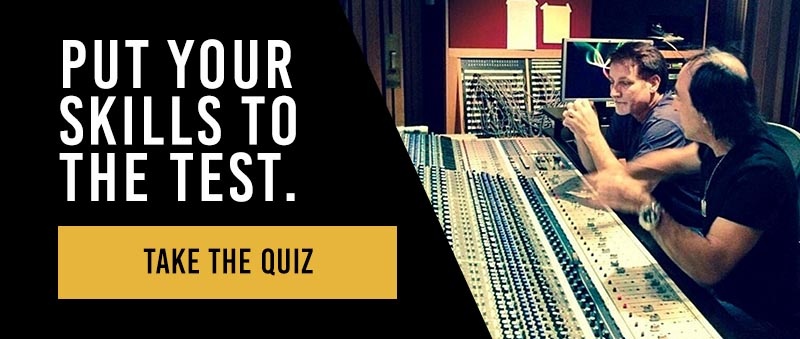Have you ever wondered how a day runs at a major recording studio? For all the high-end clients at Blackbird Studio, it all starts before the band arrives – even days before. The engineering team brainstorms with the production team to decide on the room setup, microphone and preamp selections, outboard gear choices, and specific workflows for the upcoming sessions.
On day one, the assistants show up early to get everything ready for the band. The typical time frame for setting up a tracking session at Blackbird is four hours or more. This is so when the band arrives, the signal flow and polarity of all the mics are tested, session neatness is in order, and everything else that is needed to assure the artists’ comfort is right. One of the great “secrets” of a successful session at the highest level of audio production is that the studio looks, feels, and operates at its best. This is imperative for setting up the vibe for creating great music.
After the setup, the band members and engineers will start showing up to work. The team’s job now is to keep their eyes and ears on the session to make sure everything is sounding great and the atmosphere is relaxed but professional. A great engineer makes the technology disappear, giving the artist free rein to create without worrying about or hearing any problems that would hamper creativity. At the same time, the assistant’s job is to cater to the engineer and artist’s needs. A great assistant is like wallpaper – quietly waiting in the background until they are needed. Session days can be long, so the job may expand to filling food orders, setting up new microphones, keeping the studio neat, and paying attention to anything that needs to be done. Think of the assistant as a tech-savvy 5-star audio concierge in a studio where art and technology meet.
Once the session is over, the assistants’ job is to break down the studio for the next session, but not before they document the setup. This is so when the band returns for future projects, they can recreate the setup, including the console and room layout, microphones, preamps, outboard gear, session sample rate, the band’s food orders from their favorite lunch spot, what snacks they like and more. It’s all part of the job of making music at the high end. Does this sound great? If so, then a career in audio engineering is for you.
What makes The Blackbird Academy unique is that our curriculum is designed around the same session workflows as Blackbird Studio. At the academy, the hours, studios, consoles, mics, preamps, outboard gear, and everything else is the same as experienced by the top names in audio – in some cases, the same people! For example, Academy students have recorded Two Steel Girls from The Voice, Chance McCoy from the Grammy-winning Old Crow Medicine Show, and more.
Mentor engineers have included Ken Scott (The Beatles, David Bowie), Nick Raskulinecz (Rush, Foo Fighters), Jacquire King (Kings of Leon, Norah Jones), David Thoener (John Mellencamp, J. Geils Band), John McBride (Stevie Nicks, Dave Stewart, Martina McBride), Steve Marcantonio (Hunter Hayes, Cheap Trick), and many more.
This quote sums up The Blackbird Academy education the best:
“If you want to be successful, find someone who has achieved the results you want and copy what they do, and you’ll achieve the same results.” – Tony Robbins
The bottom line? There is no better place to learn audio recording from those who have achieved the results you want than The Blackbird Academy. Check into our programs in recording and live sound, and our yearly summer camps.

